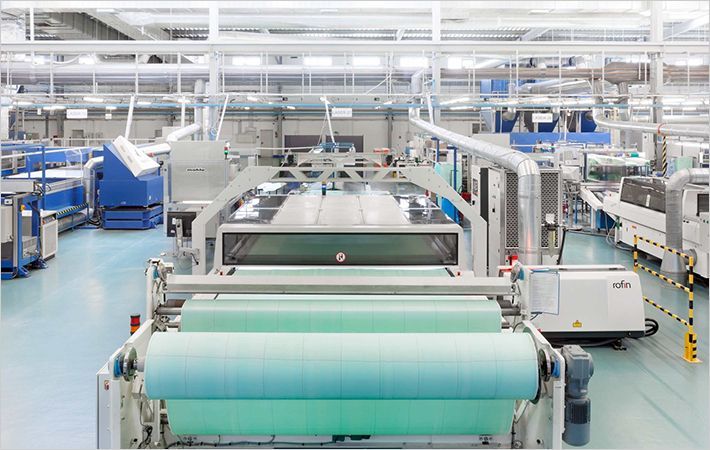Following its successful use in the aeronautics sector, C-PLY is going to be used as a key material in Jean-Marie Finot’s latest yacht, The Albatros.
Both the hull and the deck of the boat will be made from C-PLY, Chomarat’s range of carbon multi-axial reinforcements.Following its successful use in the aeronautics sector, C-PLY is going to be used as a key material in Jean-Marie Finot's latest yacht, The Albatros#
Due to its composite reinforcements, the boat’s hull weighs just 28 kg and the deck a mere 22 kg and the parts are between 2 and 6 mm thick.
Because C-PLY is both light and strong, it helps to make the Albatross a boat that is fast, sturdy and easy to handle.
“The fibre angles and ply weights of the C-PLY structure, which totally respects fibre alignment, makes it the perfect material for this lightweight, efficient and cost effective solution,” Chomarat said.
“The combination of different C-PLY reinforcements in a monolithic laminate has a sandwich structure effect that enables a 25-30 per cent hike in rigidity compared with the classic reinforcement stack (0/90),” says Jean-Marie Finot, CEO of Finot Group.
By layering multiaxials in a monolithic structure and aligning fibres parallel to the length of the boat, the boat’s rigidity can be significantly improved, enabling it to withstand flexion.
The pressure of the waves is supported by the boat’s shell, comprised of all the vertical structures that make up the exterior part of the boat’s hull.
This shell must have bend resistance from one longitudinal section to the other, from one rail to the other.
“In other specific structures with even more demanding characteristics, C-PLY can be used by removing fibres placed on the perpendicular of the main effort axis and/or by using extremely thin basic plys (50g/m²).
“This means we can develop totally innovative multiaxial materials,” says Philippe Sanial, Group R&D director at Chomarat.
A mass-produced boat usable by everyone, C-PLY enables parts to be mass produced because it can be manipulated without risk during the RTM stage and because it is a drapable material that can be moulded around the component.
“We chose these carbons because they are compatible with Vinylester resin, a material with the best resistance to corrosion and water absorption that is usually used with fibre glass,” Jean-Marie Finot adds. (AR)
Fibre2fashion News Desk - India

